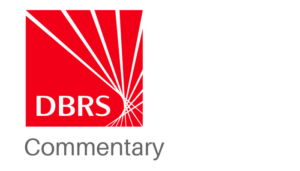The First Quarter Fiscal Update released on 31 August 2023 by Treasury Board President and Finance Minister Nate Horner showed marginal change in the budgetary surplus estimated last February. This analysis looks through these numbers to underlying trends. With oil prices now over $90, there is some cause for optimism. So far this year WTI oil prices have averaged about $76.50 U.S./barrel which is about $2.50 U.S. lower than the budget estimate. Much will depend on whether western economies achieve a “soft landing” avoiding a deep recession with falling oil demand. On 14 September DBRS Morningstar raised Alberta’s credit rating a notch to AA (see discussion below).
Is spending out of control? No
On page 4 in the Fiscal Plan Summary table, total expenditure was $64.5 billion in 2022-23 and forecast spending in 2023-24 is going to be $68.7 billion.
Most of the contingency of $1.5-billion has been consumed by disaster expenses (wildfires) and rising debt servicing costs.  Debt servicing costs are 8.6 per cent above February’s budget ($245-million) due to interest rate increases by the central bank. The province though is in a fortunate position that it can start paying off some debt. The Update noted that a $2.6-billion debt repayment is forecast this fiscal year.
Debt servicing costs are 8.6 per cent above February’s budget ($245-million) due to interest rate increases by the central bank. The province though is in a fortunate position that it can start paying off some debt. The Update noted that a $2.6-billion debt repayment is forecast this fiscal year.
There are reductions from the budget in two social programs – $62-million in Children and Family Service although spending will be up by $470-million from 2022-23. In Seniors, Community and Social Services the forecast is $69 million lower while total spending is up still by about $370 million from the previous year.![]()
Total operating spending, excluding $3.1-billion in debt servicing costs, is set to grow by 4.5 per cent in 2023-24 while total expense will grow by 6.5 per cent. The Update forecasts population growth of 4.4 per cent and inflation at 3.1 per cent making it difficult to claim that spending is out of control. Indeed, overall operating spending growth of 4.5 per cent is significantly below population growth and inflation.
Examining the big three spending departments, Health, Education and Advanced Education shows their budgeted increases are 5.5 per cent, 6.1 per cent and 1.9 per cent, respectively. This is consistent with the past four years, where universities have seen their budgets cut significantly after taking inflation into account. Even in Health and K-12 education,the increases, though higher than Advanced Education, still fall short of inflation and population growth. Maybe buoyant oil prices this fall will help the government correct for some of these cuts when “emergencies” arise like the Fuelled Brains’ child care centre E. coli outbreak.
There has been no provision for the Calgary arena “infrastructure” nor any provision for the DynaLife “nationalization.” The provision for DynaLife is not yet known while the Calgary Flames handout will occur over several years and forms part of capital spending through municipal grants.
Is spending out of control? No. Is the Smith government spending in the right areas? Not clear.
Revenue
Revenue is forecast to have fallen materially from the 2022-23 fiscal year with revenue down $5 billion from $76 billion. The main differences are non-renewable resource revenue down by roughly $7.5-billion from 2022-23. Personal Income Tax is also down from the previous year by nearly $700-million because of the reduction promised during May’s general election. These huge drops are offset by gains in Other Revenue of $3.2-billion, including increases of $1.4 billion from the federal government (including a $187-million fiscal stabilization boost), and a swing of over $2.3-billion in investment income, a volatile source of revenue.
In relation to the February budget estimate, there is a nearly $900 million increase in Corporate Income Tax and nearly $600-million in Personal Income Tax due to labour force growth. On the negative side is the fuel tax suspension of about half a billion dollars as promised during election, and a significant decrease in natural gas royalties -$1.165 billion due to lower prices than estimated in the budget $4.10 budget vs.$2.50 forecast). However, bitumen royalties are $515-million higher than budget mostly due to between WCS differentials, offset by slightly lower production. Raw Bitumen production is expected to increase from 3.249 million barrels in 2022-23 to 3.330 million in 2023-24.
The Economy section indicates that Net Corporate Operating Surplus a proxy for movement of corporate income tax will fall by 17.5 per cent in calendar 2023 but rise marginally in calendar 2024. This compares with a 59.8 per cent gain in 2022, the principal cause of corporate taxes falling by $1.3-billion in fiscal 2022-23.
Alberta Petroleum Marketing Commission (APMC)
Adding to the revenue drag is one of Alberta’s most significant, but less well-known, provincial agencies the petroleum marketing commission. As its name suggests, the Commission sells or markets the royalties received in kind from producers. According to the Update- “The net loss of $594 million reported by Alberta Petroleum Marketing Corporation (APMC) … is the responsibility of APMC and GRF (General Revenue Fund) cash is not required.”
 Source: Oilsands Magazine
Source: Oilsands Magazine
Judging from the APMC’s website, APMC seems rather proud of its involvement with the refinery.
“The NWR Sturgeon Refinery is the world’s only refinery designed from the ground up to minimize its environmental footprint through carbon capture and storage while producing the high-value, low-carbon products needed to meet North America’s demand for energy.”
The APMC has been a central figure in this ill-fated arrangement to induce more value-added to raw bitumen. According to a 2015 analysis by Ted Morton, Alberta’s former energy and finance minister, the North-west Redwater Partnership Sturgeon Refinery project “had morphed into a boondoggle.” This project was the brainchild of former Alberta Premier Ed Stelmach whose Fort Saskatchewan-Vegreville constituency included the refinery site.
Under Jason Kenney’s administration, Energy Minister Sonya Savage in July 2021 was proud to announce “a better deal on the Sturgeon Refinery… reducing risk and saving an estimated $2 billion.” This announcement followed the release of the 2020-21 financial accounts by then Finance Minister Toews in which a provision of $2-billion against the government’s interest in the refinery was taken.
As Abpolecon.ca reported in July 2021, $400-million was given to CNRL and the government claimed that it would free up $1-billion in cash flow to the government over the next five years. While the $594-million charge did not affect “cash flow to the government,” this provision on APMC’s books does affect the government’s balance sheet. The $594-million certainly does not help “free up” cash flow to the government.
Economy
On the economy side highlights of the Fiscal Update include falling real estate investment, although Calgary is stronger than Edmonton. Population growth is expected to remain strong, led by net interprovincial growth and international immigration, notably non-permanent residents (students). Energy investment is reported to be strong with a 9 per cent increase in conventional oil and gas compared with oilsands capital investment which is forecast to increase 18 per cent in 2023 and 12 per cent in 2024. Much of future investment will depend on the federal government’s willingness to fund carbon capture projects through tax incentives.
Local Government
One of the most interesting pieces of new reporting is a statutory report on the Local Government Fiscal Framework Act which requires a report detailing the calculation of the total funding available in 2024-26 for Calgary, Edmonton and all other local governments. For fiscal 2024-25 Calgary will receive $244-million in 2024-25 and $255 million in 2025-26; Edmonton will receive $158-million and $179 million; while local governments outside Calgary and Edmonton- that is the UCP’s loyal voter base, will gather in $340 million and $386 million over the next two fiscal years.The discrepancy between Edmonton and Calgary may be due to Calgary’s larger geographical and population.
Credit rating upgrade
Finance Minister Horner was quick to share the news of a credit rating update from DBRS Morningstar which came two weeks after the release of the First Quarter Update. This followed an upgrade by Moody’s in early 2023.
I recently had the opportunity to share Alberta’s story of responsible fiscal management and low-tax, pro-growth policies with major investors in Toronto, Montreal and New York City. This credit rating upgrade is another testament to our prudent fiscal management approach that is putting our province at the head of the pack.
According to DBRS’s assessment, Alberta’s adjusted basis the province is operating on a “roughly balanced position.”

Hedging its bets somewhat, the agency warned
“A negative rating action could arise from a material decline in energy prices, leading to materially weaker-than-expected financial risk metrics on a sustained basis. Following the latest ratings upgrade, a subsequent positive rating action is unlikely in the near term. However, Alberta’s ratings could be upgraded through a combination of material improvements in economic diversification and a significant strengthening of the government’s balance sheet.”
One of the rating criteria that DBRS considers is “Environmental, social and governance” (ESG) issues. While social or governance issues have no significant effect on the rating, environmental clearly does. The agency notes the province’s claims that the industrial carbon tax on heavy emitters has resulted in a decline in emissions intensity. Nevertheless the agency juxtaposed this claim by also noting “Alberta is the largest emitter of GHGs among all provinces, including on a per capita basis. In 2021, GHG emissions were 256.1 megatonnes of carbon dioxide—a 55% increase from 1990, according to Environment and Climate Change Canada.”
Time will tell with how Alberta manages both the economic diversification and climate transition files.
Related Posts
The Strange Case of NPV and the Sturgeon Refinery